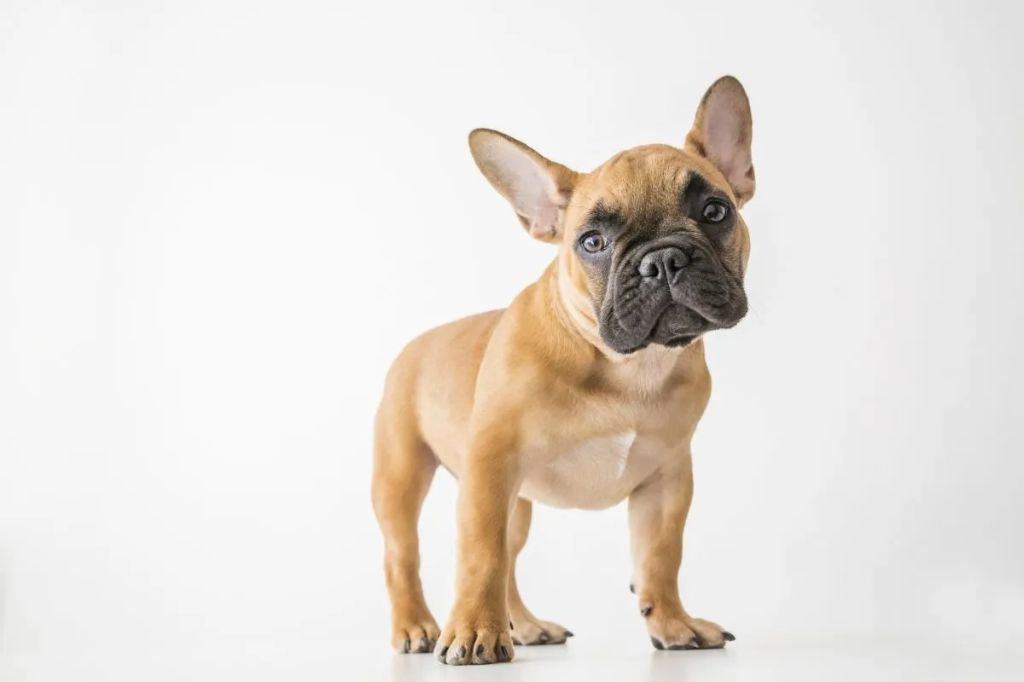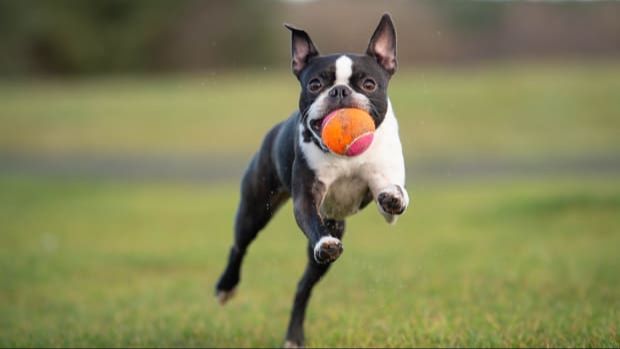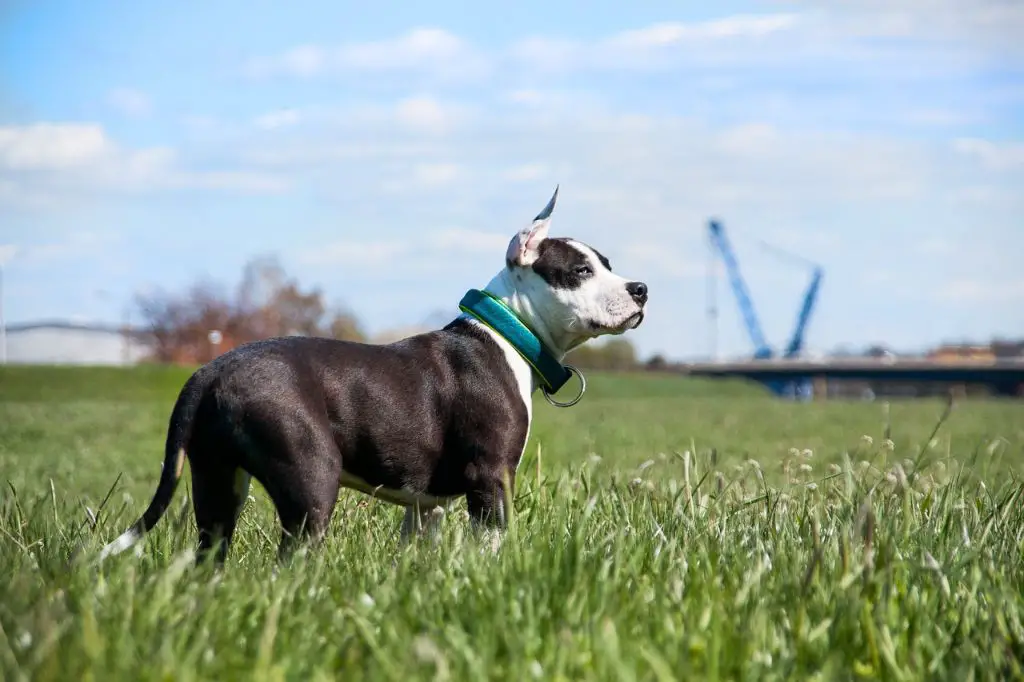Introduction
Pit bulls are a popular dog breed known for their strong and stocky build as well as their loyal and affectionate nature. However, some apartment complexes and cities have restrictions against pit bull breeds due to stigma about aggression. For those who love the look of a pit bull but need a smaller dog that isn’t affected by breed restrictions, there are several breeds that resemble pit bulls but in a more compact size.
This article provides an overview of small dog breeds that look similar to pit bulls. It covers their appearance, temperament, ideal home, care needs, health issues, and popular examples of each breed. The goal is to educate readers about pit bull lookalike breeds that can thrive in any home.
Appearance

Pit bull look-alike breeds tend to share the stocky build, muscular frame, and blocky head that pit bull breeds are known for. However, these similarities in appearance can be found across many breeds of similar size and history, such as bully breeds or terriers bred for strength and work duties.
According to one source, court documents have described the common physical characteristics of “pit bulls” as having a “short, squatty body with developed chest, shoulders and legs” and a “large flat skull.”[1] While generalizations about any breed’s appearance should be taken lightly, these broad descriptors may apply to some pit bull mixes and look-alikes.
It’s important to note that there are no official breed standards for “pit bulls” since it is a generic term encompassing American Pit Bull Terriers, American Staffordshire Terriers, Staffordshire Bull Terriers and various mixes. Appearance can vary greatly even within these individual breeds.
The most defining physical trait of a pit bull look-alike is often simply their medium, stocky build and muscular body, combined with a wide head and strong jaw. However, exceptions apply across all breeds and mixes.
[1] https://www.shawpitbullrescue.com/can-you-find-the-pit-bull/what-is-a-pit-bull/
Temperament
Though smaller in stature than the American Pit Bull Terrier, these pint-sized pups tend to share many of the same personality traits. They are known for being loyal, intelligent, and athletic companions, much like their larger pit bull counterparts.
These small dogs inherit the Pit Bull’s devotion – they bond very closely with their families and tend to be affectionate “velcro dogs” that thrive on human interaction. Their energetic nature and eagerness to please makes them highly trainable. With proper socialization and training, these diminutive dogs can be well-mannered canine citizens.
While protective of their loved ones, these small dogs are typically not aggressive towards strangers like some pit bull stereotypes might suggest. They are alert watch dogs, but are more likely to greet a new person with kisses than bared teeth. With early and continued socialization, these adaptable dogs generally excel in a range of homes and settings.
These compact canines also share the athleticism often associated with pit bull type dogs. They are energetic, agile, and love to play. Whether playing fetch, going for walks and hikes, or learning new tricks, daily exercise is a must to keep these active dogs happy.
Ideal Home
Small pit bull-looking dogs are an active, energetic breed that require equally active owners and households. Their exercise and stimulation needs mean they are best suited for homes that can keep up with their lifestyle. Some key considerations for providing an ideal home include:

- A securely fenced yard for playtime and potty breaks. Their high prey drive means they should not be left unsupervised.
- Daily walks, play sessions, or access to a safe off-leash area to burn energy.
- Mentally stimulating toys and activities such as puzzles or nosework.
- Ample attention and quality time with their family.
- Training and structure to reinforce good behaviors.
- Avoidance of apartments or condos unless able to provide sufficient exercise.
While their exercise needs are high, these dogs will be equally happy curling up on the couch after tiring themselves out. Providing activities and an active lifestyle allows them to channel their energy into appropriate outlets. With proper care and training, they can thrive in active households.
Care
Potential owners of these smaller terrier-like breeds should understand and be able to provide their exercise, training, and grooming needs. Though smaller, they are energetic dogs that need daily exercise and activity.
Aim for at least 30-60 minutes of brisk walking or jogging per day. Additionally, they enjoy playing fetch or frisbee to work off pent up energy. Mentally stimulating games like hide and seek are also recommended.
Obedience training and socialization are musts starting from a young age. Work on basic commands like sit, stay, come, heel, and leave it. Leash training is also essential for controlling pulling and wandering instincts when out for walks. Socialize them properly to minimize dog aggression issues.
Grooming needs vary by specific breed. Smooth coated varieties like Boston Terriers require occasional brushing and bathing when dirty. Wire coated breeds such as Wire Fox Terriers need weekly brushing and stripping/plucking of dead hairs twice a year. Ears should be checked and cleaned regularly to avoid infection.
Health
Small dogs, especially those less than 10 pounds, are prone to certain health issues that prospective owners should be aware of. Some of the most common health problems found in small dog breeds include:

- Tracheal collapse – a deformity that causes the trachea to flatten and close during breathing. This is common in toy breeds like Chihuahuas and Pomeranians (source).
- Mitral valve disease – a heart condition where the mitral valve thickens and fails to close properly. Seen in breeds like Cavalier King Charles Spaniels and Dachshunds (source).
- Patellar luxation – dislocation of the kneecap. Common in toy and miniature breeds (source).
Being aware of potential health issues can help owners get their dog screened, catch problems early, and provide proper care. Consulting with a veterinarian is advised.
Popular Breeds
Some popular dog breeds that resemble pit bulls in appearance but are smaller include:
- American Staffordshire Terrier – This breed looks nearly identical to the American Pit Bull Terrier, but is on average 15-20 pounds lighter. They have a stocky, muscular build and a short, smooth coat that comes in various colors. American Staffordshire Terriers have an energetic, playful nature and make great family pets when properly trained and socialized (source: https://thedogsnobs.com/dog-breeds-that-look-like-pitbulls-but-arent/).
- Boston Terrier – Often called “American Gentlemen,” Boston Terriers have the stocky, muscular build of a pit bull but in a much smaller package of usually 15-25 pounds. They have a short, smooth coat that comes in brindle, seal, or black. Bostons have an even temperament and lively, playful spirit (source: https://www.akc.org/dog-breeds/boston-terrier/).
- French Bulldog – Frenchies have the signature short snout, muscular frame, and brindle coloring of pit bulls. However, they only grow to be about 16-28 pounds. French Bulldogs have a playful, mischievous personality and thrive on human companionship (source: https://www.akc.org/dog-breeds/french-bulldog/).
While these breeds share the stocky appearance of pit bulls, it’s important to note they have been bred separately for different purposes and temperaments.
Adoption
Adopting one of these breeds from a rescue or shelter has many benefits. Rescuing a dog provides them with a second chance at finding a forever home. Many of these breeds end up in shelters through no fault of their own – it’s often due to irresponsible ownership or breed discrimination. Adoption fees typically cover initial vet care, vaccines, spay/neuter surgery, and microchipping. Adopting from a shelter helps save lives and reduces the number of pets euthanized each year. It also combats the negative stereotypes about bully breeds by allowing their sweet temperaments to shine through. Responsible ownership and socialization are key to ensuring any dog breed becomes a beloved family companion.
“Adopting a bully breed from a shelter gives them the opportunity to flourish in a home environment and showcases their potential as wonderful pets.” (Source)
Training
Proper training and socialization are extremely important for pit bull-type dogs from a young age. According to the American Society for the Prevention of Cruelty to Animals (ASPCA), pit bulls are eager to please and respond exceptionally well to positive reinforcement training techniques like reward-based training. They recommend starting training and socialization as early as 8-12 weeks old.

Obedience training is crucial for teaching pit bulls manners and impulse control. The ASPCA recommends basic obedience commands like sit, stay, come, down, heel, and leave it. Consistency and patience are key when training pit bulls. Activities like agility can provide mental stimulation. Socialization and controlled interactions with other dogs and people are also very important for pit bull-type dogs.
It’s essential proper precautions are taken when owning powerful breeds like pit bulls. Owners must commit to training, socializing, and providing adequate physical/mental exercise. With proper care, pit bulls can make wonderful family companions. For more pit bull training tips see: How to Train a Pit Bull: Important Tips & Tricks
Conclusion
In summary, there are several breeds of dogs that have a similar appearance to the American Pit Bull Terrier but in a smaller size. These include breeds like the Staffordshire Bull Terrier, Miniature Bull Terrier, American Staffordshire Terrier, and American Bulldog. Though they may look tough, these dogs are known for being friendly, loyal, and eager to please their owners when properly socialized and trained. Their smaller size makes them better suited to apartment living than large Pit Bulls. With strong leadership and early socialization, these pint-sized Pit Bull lookalikes can make wonderful family companions. Adopting one of these breeds comes with the responsibility to train them and be a responsible owner. When matched with the right owner, smaller Pit Bull type dogs can thrive and be happy, well-behaved canine citizens.
